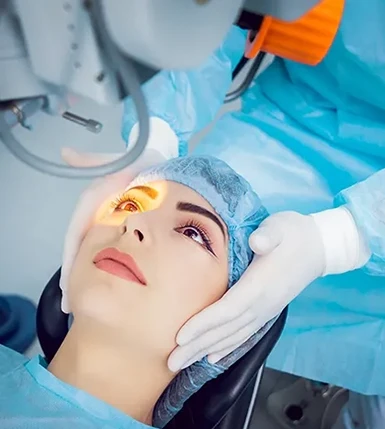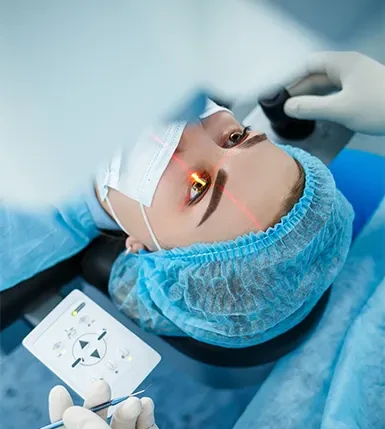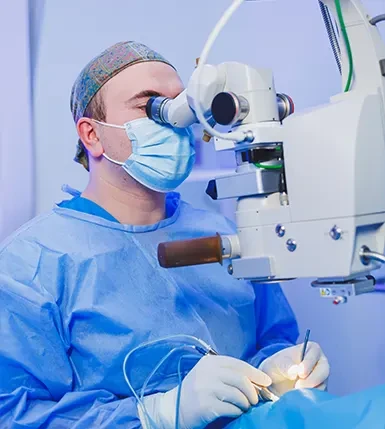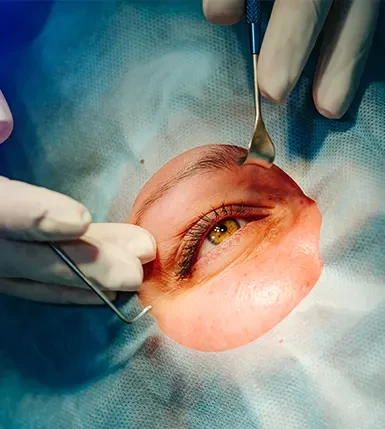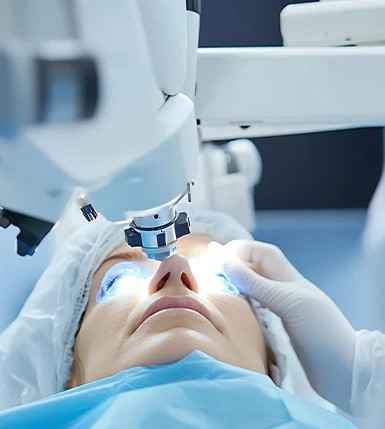Is lasik safe? Everything you need to know.
With the tremendous advancements in ophthalmology over recent decades, LASIK (Laser-Assisted In Situ Keratomileusis) has become one of the most common procedures for vision correction. Millions of people worldwide undergo LASIK to eliminate the need for glasses and contact lenses and to enjoy clearer vision and a more comfortable life.
Still, the question on many minds before considering the procedure is: Is LASIK truly safe?
This article covers medically-backed facts and recent studies about LASIK safety, outlining how patients can confidently make their decision, while highlighting the top services and doctor expertise available at Eye Care Center—one of the leading vision correction centers in Egypt and the region.
What is LASIK and how does it work?
LASIK surgery is a precise procedure used to correct refractive errors like myopia, hyperopia, and astigmatism by reshaping the corneal surface using laser energy. The surgeon creates a thin corneal flap, then uses a laser to reshape the underlying tissue with micrometer-level accuracy, before repositioning the flap without the need for stitches.
The goal is to adjust light refraction to focus directly on the retina, giving the patient clear vision without glasses or contacts.
Is LASIK really safe?
LASIK is considered one of the safest procedures in modern medicine, thanks to major technological advances in laser devices and thorough pre-surgical evaluation. Statistics show the risk of serious complications is less than 1%—an extremely low rate compared to other surgeries.
LASIK safety goes beyond the device used and depends on:
-
Patient evaluation before surgery: Ensuring corneal health, adequate thickness, and stable vision.
-
Experience of the surgeon: Every step is critical, and any miscalculation can impact the final outcome.
-
Sterilization and clinic quality: That's why accredited centers like Eye Care Center stand out for adhering to top sterilization and safety protocols.
Notably, the latest technologies—such as Femtosecond LASIK and Contoura Vision LASIK—have raised safety and precision to unprecedented levels, with each laser beam tracked in real time.
Factors that enhance LASIK safety
Comprehensive preoperative screening:
All LASIK candidates undergo detailed testing: measuring corneal thickness, curvature, shape, and retina status. This step prevents inappropriate candidates from undergoing surgery and minimizes potential risk.
Internationally approved equipment:
Eye Care Center uses FDA-approved devices, ensuring both safety and surgical precision.
Modern surgical techniques:
Methods like wavefront-guided and topography-guided LASIK allow each procedure to be tailored to the patient’s unique eye “fingerprint,” delivering the best results with the highest safety standards.
Surgical experience:
Studies show experienced surgeons achieve higher success rates and reduce complication rates by up to 40% compared to less experienced ones.
Rare LASIK complications and how to avoid them
While the procedure is very safe, a few minor complications can rarely occur, such as:
-
Temporary dry eyes: Typically managed with lubricating drops during the first weeks.
-
Night glare or halos: Usually fades within months after surgery.
-
Over- or under-correction: Extremely rare and can often be fixed with a touch-up laser treatment.
To prevent complications, doctors recommend:
-
Avoid rubbing your eyes after surgery.
-
Use all prescribed drops as instructed.
-
Avoid direct exposure to dust or water during the first week.
-
Attend all scheduled follow-up visits.
Eye Care Center’s medical team
Eye Care Center boasts a roster of the best ophthalmic surgeons in Egypt and the Middle East, all holding advanced degrees from top world universities and international certifications in vision correction. The center is proud of its accreditation from the General Authority for Healthcare Accreditation and Regulation (GAHAR)—an award only given to institutions meeting the highest global standards for safe, quality medical care.
Doctors here perform thousands of LASIK procedures annually, achieving high success rates, with each patient receiving personalized, meticulous follow-up. The team adheres to the latest sterilization and screening protocols, making the overall experience safer and more comfortable for the patient.
Eye Care Center services
Eye Care Center delivers a full range of state-of-the-art vision correction services, targeting the best visual outcomes with the highest safety and precision:
-
Preoperative testing to determine the most appropriate procedure (LASIK, Femto LASIK, Contoura LASIK).
-
Custom LASIK (eye fingerprint mapping) for individualized outcomes.
-
Contoura LASIK: advanced correction using detailed corneal maps for optimum vision.
-
Femtolasik: creating the corneal flap with femtosecond laser for unmatched accuracy, no manual tools.
-
Procedures are performed with the latest internationally recognized devices.
-
Comprehensive aftercare to ensure fast healing and long-term stability.
-
Specialized support for local and international patients, including help with appointments, lodging, and post-op care.
For more details, visit: LASIK Clinic – Eye Care Center
Future of LASIK and recent innovations
Refractive surgery is evolving rapidly, with a focus not only on improving vision but also on creating highly individualized treatment plans for each patient. New innovations include:
-
AI-assisted LASIK planning: Artificial intelligence analyzes corneal data to select the safest, most accurate correction pattern and lower risk.
-
7D eye-tracking: Devices that track eye movement in seven dimensions, eliminating almost all procedural error and further increasing safety and success rates.
-
Combined mapping: Technologies that merge topographic and refractive maps, giving doctors a complete, high-resolution image of the eye and allowing for even safer, more targeted plans—especially for complex cases.
-
TransPRK & SmartSurface: Newer no-flap options for patients with thin or sensitive corneas, reducing healing time and preserving corneal strength.
These are not just future breakthroughs—they’re already a reality in advanced centers like Eye Care Center, which continually updates equipment and techniques to reflect the latest in global medicine. This commitment delivers the highest safety, precision, and a completely tailored vision correction journey for every patient.
Frequently Asked Questions about LASIK safety
-
Is LASIK painful?
No, the surgery is performed with local anesthetic drops. Patients usually only feel light pressure for a few seconds. -
Can the procedure fail or harm vision?
Risk of failure is nearly zero in specialized centers, though outcomes depend on precise preoperative testing and surgical expertise. -
How soon can I return to normal life?
Most people resume regular activities within 24–48 hours, avoiding exertion or swimming the first few days.
Conclusion
It can be confidently said that LASIK is safe, especially when performed at a certified, specialized center like Eye Care Center. True safety lies not just in the technology, but in choosing the right doctor and a clinic that upholds the highest quality standards.
If you’re considering LASIK, start your journey with confidence at Eye Care Center, where safety, expertise, and advanced technology restore your clarity of vision and quality of life.



